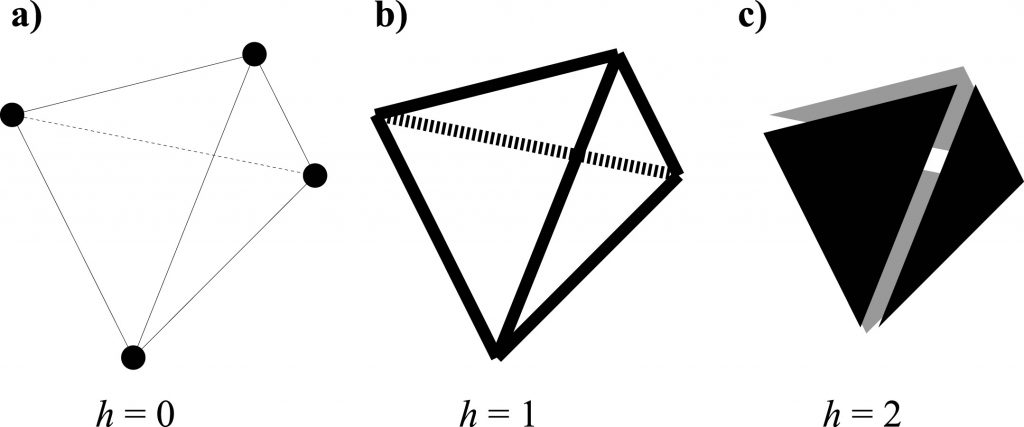Mono-unstable polyhedra with point masses have at least 8 vertices
Sándor Bozóki, Gábor Domokos, Flórián Kovács, Krisztina Regős
Abstract: The monostatic property of convex polyhedra (i.e., the property of having just one stable or unstable static equilibrium point) has been in the focus of research ever since Conway and Guy (1969) published the proof of the existence of the first such object, followed by the constructions of Bezdek (2011) and Reshetov (2014). These examples establish
as the respective upper bounds for the minimal number of faces and vertices for a homogeneous mono-stable polyhedron. By proving that no mono-stable homogeneous tetrahedron existed, Conway and Guy (1969) established for the same problem the lower bounds for the number of faces and vertices as
and the same lower bounds were also established for the mono-unstable case (Domokos et al., 2020b). It is also clear that the
bounds also apply for convex, homogeneous point sets with unit masses at each point (also called polyhedral 0-skeletons) and they are also valid for mono-monostatic polyhedra with exactly one stable and one unstable equilibrium point (both homogeneous and 0-skeletons). In this paper we draw on an unexpected source to extend the knowledge on mono-monostatic solids: we present an algorithm by which we improve the lower bound to
vertices on mono-unstable 0-skeletons. The problem is transformed into the (un)solvability of systems of polynomial inequalities, which is shown by convex optimization. Our algorithm appears to be less well suited to compute the lower bounds for mono-stability. We point out these difficulties in connection with the work of Dawson, Finbow and Mak (Dawson, 1985, Dawson et al., 1998, Dawson and Finbow, 2001) who explored the monostatic property of simplices in higher dimensions.
